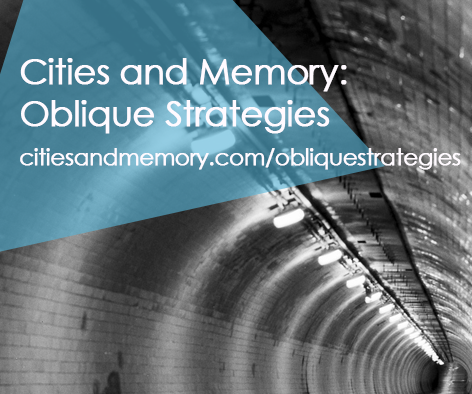Cities and Memory: Oblique Strategies sees more than 50 source field recordings from 19 countries all over the world reimagined using only the Oblique Strategies cards to define their direction and inspiration.
The sounds from across the world are as diverse as the clatter of vintage printing presses, a shimmering chorus of insects, Hawaiian waves, the clamour of an English football match, the busying thrum of an international airport, the calm of a Buddhist temple and the power of a driving thunderstorm.
The remixed versions range from musical tracks built from the original samples, drone and ambient pieces built from field recordings, abstract interpretations of the original sounds and frantic cutups elaborately constructed from the source sounds.
An album of highlights from the project, entitled Cities and Memory: Oblique Strategies, will be released digitally later in April via Cities and Memory
The project is one part of a global field recording & sound art work called Cities and Memory, which aims to present and remix the sounds of the world through a global sound map in which every location has two sounds: a documentary field recording and a reimagining of that sound.
The project is completely open to submissions from field recorders, musicians or anyone with an interest in exploring sound worldwide. The field recording and sound art communities have embraced the concept: more than 100 field recordists and sound artists from as far afield as Calcutta, Los Angeles and Cape Town have taken part, providing field recordings and radical reimaginings of global sounds.
Cities and Memory takes its name and original inspiration from Italo Calvino’s book Invisible Cities, which explores how people can experience the same place in dramatically different ways.
“As this wave from memories flows in, the city soaks it up like a sponge and expands. A description of [the city] as it is today should contain all [the city’s] past. The city, however, does not tell its past, but contains it like the lines of a hand, written in the corners of the streets, the gratings of the windows, the banisters of the steps, the antennae of the lightning rods, the poles of the flags, every segment marked in turn with scratches, indentations, scrolls.”
– Italo Calvino, Invisible Cities.
The Cities and Memory: Oblique Strategies project launched on 10 April 2015 at www.citiesandmemory.com/obliquestrategies
